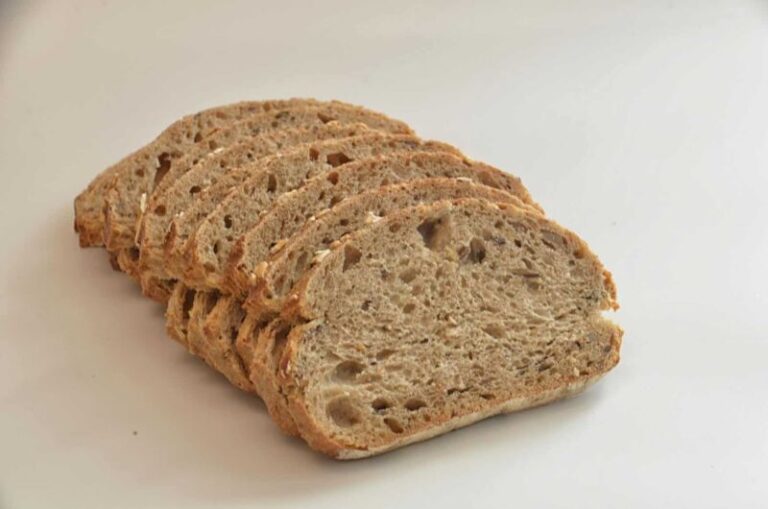How Much Is 3 Ounces Of Chicken?
Chicken has long been a popular choice for meals due to its versatility and delicious taste. Whether grilled, roasted, or used in a variety of recipes, chicken remains a staple in many households.
When it comes to dietary guidelines, understanding the quantity of chicken you consume is essential for maintaining a balanced diet.
In this article, we will explore the measurement of 3 ounces of chicken, providing various methods to accurately determine this amount.
How To Measure 3 Ounces of Chicken?

To ensure precision, a kitchen scale is the most reliable tool for measuring the weight of a chicken. However, if a scale is not available, alternative methods can be used. It’s important to note that raw chicken tends to shrink in weight when cooked, so it’s crucial to measure the raw chicken accurately.
One method to estimate 3 ounces of chicken without a scale is by using the palm of your hand. A portion of chicken approximately the size and thickness of your palm (excluding fingers and thumbs) will provide a rough estimate.
Another method is visualizing a deck of playing cards. A piece of chicken that is roughly the size and width of a deck of cards will give you a close approximation of 3 ounces. Additionally, you can use a measuring cup, keeping in mind that it provides only an approximate measurement.
What Does 3 Ounces Of Chicken Look Like?

If you’re having trouble visualizing 3 ounces of chicken, here are some helpful comparisons.
A portion of chicken that weighs 3 ounces is roughly the size of a deck of cards in terms of width and thickness.
Another way to visualize it is by considering the size of an average palm, excluding fingers and thumbs.
Lastly, 3 ounces of chicken fills slightly more than half a cup when placed in a measuring cup, which is approximately 60% of its capacity.
Protein Content in 3 Ounces of Chicken

Chicken is an excellent source of lean and digestible protein, making it a popular choice among health-conscious individuals. However, the protein content may vary depending on the cut of chicken. When comparing different cuts, it’s important to consider the protein-to-fat ratio.
Chicken breast tends to have the highest protein content among cuts of chicken, while cuts like thighs and drumsticks contain slightly less protein. It’s worth noting that skinless chicken breasts generally have a lower fat content compared to skin-on chicken.
| Cut of Chicken | Protein | Fat |
|---|---|---|
| Skinless Chicken Breast | 26 grams | 3 grams |
| Skin-On Chicken Breast | 25 grams | 6.6. grams |
| Skinless Chicken Drumsticks | 23.7 grams | 4.8 grams |
| Skin-On Chicken Drumsticks | 22.8 grams | 9.3 grams |
| Skin-On Chicken Wings | 22.5 grams | 16.2 grams |
| Skinless Chicken Thighs | 21.9 grams | 9 grams |
| Skin-On Chicken Thighs | 21 grams | 13 grams |
Caloric Value of 3 Ounces of Chicken

The calorie count of 3 ounces of chicken can vary depending on the specific cut. Here are some average calorie counts for popular cuts of chicken:
- Chicken thighs: Skinless chicken thighs typically contain around 140 calories, while skin-on thighs can have slightly more due to the added fat.
- Chicken breast: Skinless chicken breast is known for being a lean protein option, with around 120 calories. However, the calorie count can increase if the breast is consumed with the skin, as the skin contains additional fat.
- Chicken wings: Chicken wings, particularly when consumed with the skin, can have a higher calorie count. On average, a single chicken wing with the skin intact contains around 100 calories.
- Chicken drumsticks: A skinless chicken drumstick usually has around 130 calories, but the calorie count increases when the skin is included.
Meat Quantity in an Average Chicken Breast
Uncooked chicken breasts can vary in weight, but they generally fall within a certain range. A typical uncooked chicken breast can weigh between 6 to 8 ounces. It’s important to consider that chicken breast tends to shrink during the cooking process, losing some weight in the form of moisture.
To accurately measure 3 ounces of cooked chicken breast, it is recommended to use visual measurements. A portion roughly the size and thickness of a deck of cards will provide a close approximation.
Meat Quantity in an Average Chicken Thigh

When it comes to chicken thighs, the weight after removing the skin and bones can vary. However, there is typically no significant difference in weight between skin-on and skinless thighs. This means that the meat content remains relatively consistent, regardless of whether the skin is removed or not.
To measure 3 ounces of chicken thigh, you can follow the same visual measurements as mentioned earlier, aiming for a portion that resembles the size and thickness of a deck of cards.
Meat Quantity in an Average Chicken Drumstick
Measuring the meat quantity in a chicken drumstick requires consideration of bone weight. On average, a chicken drumstick weighs between 4 to 5 ounces, including the bone. The meat content can vary depending on the size of the drumstick.
To estimate 3 ounces of meat from a chicken drumstick, it is recommended to choose a drumstick that is smaller in size. Visualize a portion similar in size to a deck of cards, which will give you an approximate 3-ounce serving.
Meat Quantity in an Average Chicken Wing
Chicken wings typically contain approximately 1 ounce of meat per wing. This estimate considers the meat on both the drumette and wingette sections of the wing. When measuring for a 3-ounce portion, you can approximate it by selecting three chicken wings.
Conclusion
Accurately measuring the quantity of chicken you consume is vital for maintaining a balanced diet. While a kitchen scale provides the most precise measurement, alternative methods can be used when a scale is not available.
Visualizing the size and thickness of a deck of cards or using your palm can give you a good estimation of 3 ounces.
Remember to consider the protein content, calorie count, and cooking shrinkage when portioning your chicken. By utilizing these methods, you can confidently enjoy your meals while adhering to dietary guidelines.





